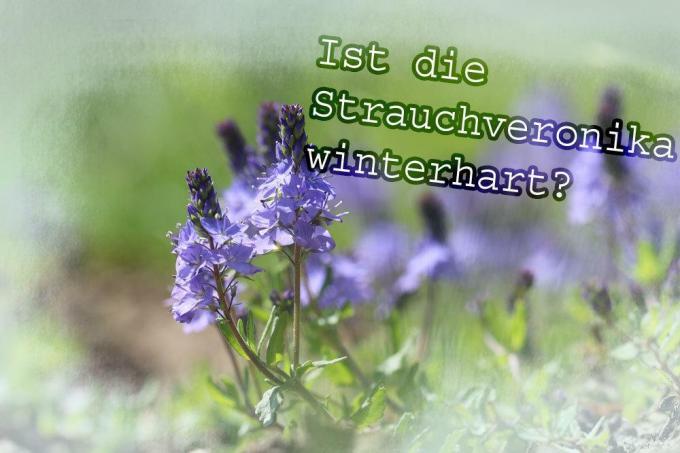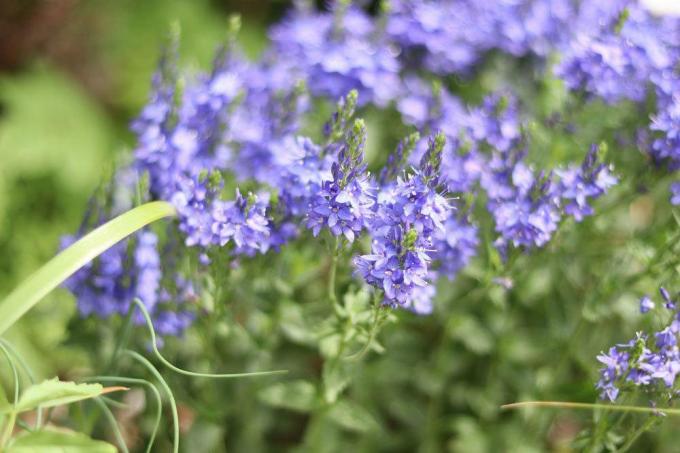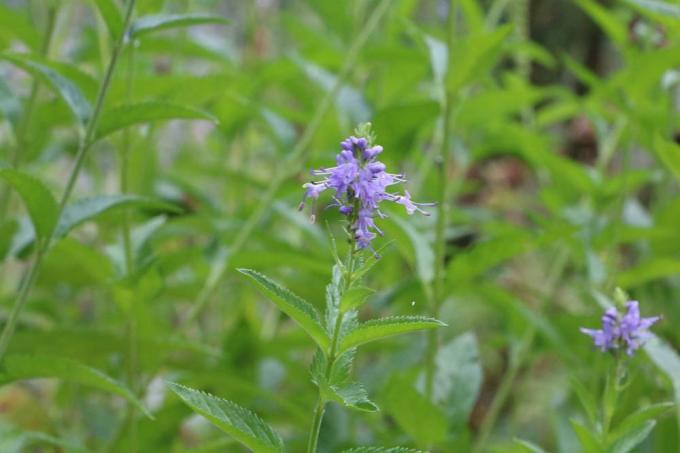
table of contents
- Shrub Veronica
- Winter protection
- Measures for conditionally hardy Veronica
- Winter hardy species do not overwinter
- sorts
the Shrub Veronica is an interesting garden plant that offers many possibilities. On the one hand there are varieties that bloom blue, purple, white or pink and on the other hand there are some types that have no or inconspicuous flowers and are suitable as green plants. They particularly shine with their leaf decorations. A recurring question is how hardy the individual varieties are. This guide provides information about which species need winter protection and which prefer to spend the winter indoors.
Shrub Veronica
The origin of this plant is in New Zealand. It therefore also seems clear that the wild form did not need winter protection. The Hebe belongs to the plantain family and is an evergreen shrub. Depending on the variety, it can be between 30 and 120 cm high. The flowers appear in different colors from May to October. In our gardens, the shrub veronica is mainly suitable as a balcony or container plant due to its lack of winter hardiness.
Winter protection
No Hebe is really hardy in the sense that it could withstand several freezing temperatures and survive unprotected in the garden all winter long. While some species do not tolerate the cold at all and are therefore only suitable as container plants in winter should be given, there are also some shrub veronica that survive in the garden with winter protection can. In order to guarantee a new shoot, the protection of the plant should be done carefully. It is particularly important that the roots cannot freeze to death. As long as these are intact, even a plant that has frozen above ground can sprout again. It is considered that small-leaved shrub veronica tolerate frost better than the varieties with large leaves.
Measures for conditionally hardy Veronica
In order to increase the resistance of the plants, they should no longer be fertilized in autumn. The pots of potted plants are then wrapped with fleece, placed in a protected place near the building and the root area covered with spruce branches. Veronica that grow directly in the garden need particularly good protection against frost. This should be taken into account when choosing a location and a place should be chosen where there is no too deep frost. The root area is piled up a little in autumn and then covered generously with cut branches from spruce or fir trees. Leaves can also protect against frost.
tip: The safest method, even for garden plants, is still to dig them up, plant them in large pots and overwinter them indoors.
Winter hardy species do not overwinter
The plants are cleared in late autumn, but definitely before the first night frosts. The location in the house should be bright but cool. The temperatures should be between 5 ° C and 10 ° C. If the leaves turn yellow after a while, the plant is too dark and should be given a lighter spot. The shrub veronica does not have to stand directly in the sun, as this could heat it up too much. In winter quarters, watering is only used sparingly without the plant drying out. In addition, the hoe requires regular checks for pests. Spider mites like to settle on overwintering garden plants if they are too dry and without fresh air.
After the winter
If no or hardly any night frosts are expected, you can start to get the Hebe used to the outdoor location again. During the day you should put them in a shady, sheltered place, but put them away again when night frosts threaten. After a few days or weeks you can move the plant back to its original place in the garden. If the veronica is infested with spider mites, it helps to remove the respective shoots. In the open air, the problem will quickly resolve itself due to the increased humidity and beneficial insects.
The following applies to species overwintered in the bed:
- Remove winter protection after the last night frosts
- Encourage light and soil warming as early as possible
- Remove frozen shoots to avoid disease
sorts
Lifts that remain small and are conditionally hardy
Hebe addenda grows to a height of 20 to 30 cm, blooms pink or pink from August to October and is well suited for pots. The shrub veronica "Green Globe" is particularly popular. Although it has no flowers, it is very easy to cut and can therefore be easily cut into shape. It grows up to 50 cm high. The ochracea variety, which is 40 cm high and blooms blue or purple, is also suitable for beds or tubs. Flowering time is from July to September.
Larger conditionally hardy shrub veronica
The armstrongii variety, which is suitable for the balcony or terrace, grows up to 100 cm high. It blooms rather inconspicuously from May to June and can be planted well in tubs or larger pots. One of the largest varieties is salicifolia, which can grow up to 120 cm high. It has lavender or white flowers, is well suited for planting in pots or beds and blooms from June to August. The speciosa variety also grows up to 120 cm high. It blooms from July to September in blue or purple.

Not hardy varieties
The andersonii variety flowers beautifully purple, becomes 60 cm high and has large leaves. This shrub veronica flowers from August to September. The flowers of the Hebe pimeleoides var. Glaucocaerulia are purple in color and appear from July to August. The plant, which is well suited for the balcony, becomes 30 cm high.




